Voice of Experience: Philippa Nesbit, Chief Risk Officer, Citi Private Bank and Citi Holdings
 By Melissa J. Anderson (New York City)
By Melissa J. Anderson (New York City)
Reflecting on her early career, Philippa Nesbit, Chief Risk Officer at Citi Private Bank and Citi Holdings, encouraged junior women to seek out broad opportunities to learn. “Really, the important thing is getting a diversity of your knowledge base. It’s easier to learn more and get a breadth of knowledge when you are junior. When you are a managing director, it’s hard to get those different experiences. I hadn’t appreciated the importance of that 20 years ago.”
She continued, “Tied to that, make sure you grasp every opportunity. Be really flexible and adapt the ways that you work. Our junior colleagues are from a generation with lots of tools and options to manage their careers – from day one, develop and build your network every day.”
“I attribute a lot of my success to being able to call many people – to get both business perspectives and career perspectives. I will always advise people to ‘push yourself’. Put yourself out of your comfort zone and into decision making roles,” she added.
Career Path
After studying economics at Cambridge, Nesbit took a role at Citi. “I always knew I wanted to go into banking,” she explained. Now, 21 years later, she has held a variety of roles at the bank. “You could say I’ve had a split career – the first half, for about ten years, I was a relationship manager working in our Corporate Bank and also spent time working on project finance transactions. For the second half, I worked in risk management in a number of different roles, with both regional and global portfolios.” She added, “I’ve had the best of both worlds – direct client responsibility and indirect client responsibility.”
Recently, Nesbit was named Chief Risk Officer for Private Banking and Citi Holdings. Before that she held the positions of Chief Risk Officer for Fundamental Credit Risk and prior to that was Western Europe Risk Head and Global Risk Head for the Consumer and Healthcare Industry.
She has a number of achievements to be proud of. For example, earning the managing director title, becoming a senior credit officer at the highest level at the bank, and now becoming a Chief Risk Officer. She also named a few specific achievements, but explained that what brings one the most pride about their work is often dependent on their career situation.
She explained, “It really depends on where you are in your career as to what you are most proud of. When I was a banker, we pitched for and won a new global customer cash management mandate, which was my very first client win. I was very proud of that. Achieving a positive change in strategy for client relationships on the business side, as well as having a direct impact on the Risk profile of the bank are what brings me the most pride.”
Currently, Nesbit is settling into her new role as Chief Risk Officer in Citi’s Private Banking division. “Because I’ve just taken on a new role, I’m learning the private banking business. I’m working with fantastic new people and dealing with a different set of clients and challenges. It’s a great new role for me to sink my teeth into.”
She is working with many others to fully embed risk management into the culture of the bank. “Integral to the culture of risk management is the concept that everyone in the bank is a risk manager. We are continuing to build and deepen a partnership with the business to make sure everyone’s got the right tools to be a risk manager.”
Corporate culture is an issue Nesbit finds particularly interesting. “It’s the point about culture – the responsibilities of banks in the current environment, and how that relates to our customers and other stakeholders. Risk management and responsibility has to be built and embedded in the culture. It’s something the industry as a whole has got to face.”
Women in Banking
Nesbit believes the biggest challenge for women has to do with the notion of “having it all.” She said, “The biggest challenge we have is the perception of being superwoman. With the perception of having it all, what expectations are being set?”
She continued, “In a time intensive career, are these hours fair? Are they flexible? We run the risk of women opting out if we do not address these issues. Actually it is something we at Citi are focused on figuring out – we are doing a global study to find out why women are opting out at the senior levels.”
“We have a responsibility, if we are really committed to diversity, to firmly believe the gender agenda is a business imperative.”
She encouraged senior women to work harder to change perceptions associated with the “queen bee” myth. “Women are accused of kicking the career ladder away behind them – and we can’t do that. We have to be sure we are pulling women up behind us,” Nesbit said. That includes working to make sure there is a pipeline of women leaders, and that they are receiving mentoring and sponsorship.
Citi offers a range of programs and initiatives to support women at the bank, she continued. The Women Leading Citi program is aimed at Managing Director level women, and Citi’s Women’s Leadership Development Program is aimed at Director level women. She also served as a sponsor as part of Citi’s Women in Risk program. “In my new role, there isn’t a women’s program within Private Banking Risk, so we are putting together a steering committee and are launching our initiative shortly.”
In Her Personal Time
Outside the office, Nesbit enjoys spending time with her family. “I’m a single mom with two children,” she said. “I also really enjoy cooking – it’s a good way to take your mind off work. And I love traveling when I have the chance.”

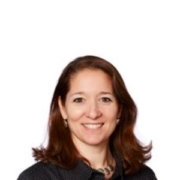

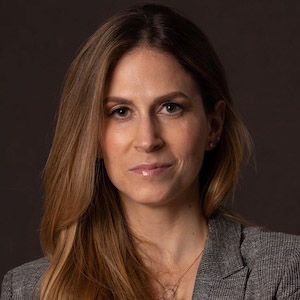
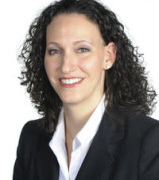
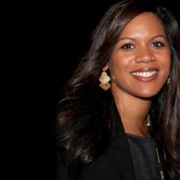
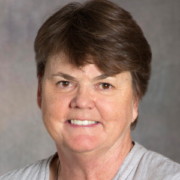
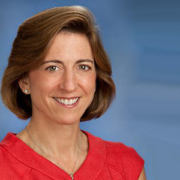


It’s inspiring to see women rising in the ranks, holding down jobs traditionally held by men. I work for a financial institution also headed up by a powerful and highly influential woman.
This insight is very helpful to hear now that I have made a career change into KYC Onboarding which instills the risks involved and attention to who we have as clients in the bank. I also wished I had heard these tips over 15 years ago.
I’m very happy that Philippa Nesbit has achieved success, but she is a rare commodity within Citi.
There are 2 women in Citi’s leadership team, out of 24 in total. That’s not even remotely close to 50%.
In Asia, there is a gender diversity dilemma and you can count the number of women managing directors in their TTS business on one hand. I don’t think women want it all, we just want a fair chance of success and this is not a reality at Citi (or likely any bank for that matter).
Citi – why only provide programs for women at D and MD level? I believe it is those striving to get to these levels that need the coaching and mentoring provided to the already senior women. As to why women drop out when then reach senior management, dealing with all of the masculine entrenched business rules becomes too much, and without a support group of women with whom to work with, they opt out. As also pointed out in the article, women generally don’t help women. Queen Bee syndrome is still rife.
Thanks for your comment. You touch on good points about women benefiting from supportive networks. Sponsorship and mentorship are both key factors in engaging, inspiring, and motivating junior women at work. Gender equality in the workplace is still a work in progress for sure, but this is why we do what we do each day to draw attention to the important issues surrounding this topic.
Starting on August 19th, we will be running a “Spotlight on Asia” feature where we will run profiles of senior level women working in Asia. Their stories and experiences are interesting and inspiring. Make sure you check it out!